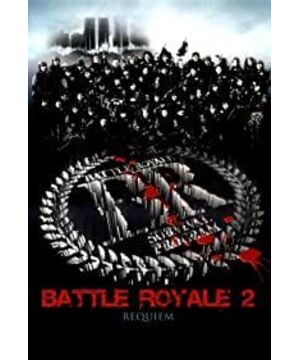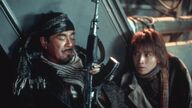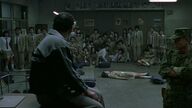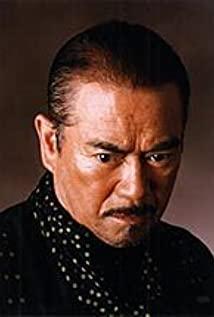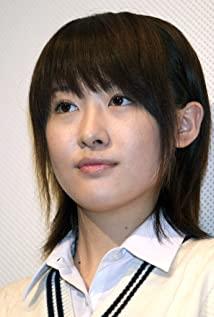Most of the members were the most extreme radicals in the Japanese student movement against the Japan-U.S. Security Treaty in the 1960s, including the "Japanese Red Guards." Among them, there are more than 30 key members and more than 100 ordinary members. The bosses are Shigenobu House and Kozo Okamoto. The headquarters is located in Lebanon controlled by Syria, such as the Bekaa Valley; other members are scattered in Syria, Libya, Europe and Southeast Asia. It has close ties with the terrorist organization "Fatah Revolutionary Committee" in the Middle East and Carlos, the number one international killer.
The organization's program is to establish a base for the world revolution, carry out armed struggle, break the reactionary encirclement of China, and support the Palestinian people and all revolutionary and just struggles. They have planned and implemented the political "Xingya Guanyin Statue" (built by the commander Matsui Ishine who commanded the Japanese army to occupy Nanjing during the Nanjing Massacre) and the "Seven Martyrs Monument" (Class A war criminals such as Hideki Tojo) Weiling Monument) Blasting case. They advocate urban guerrilla warfare as the main method of struggle, and believe that the way to realize the revolution is to carry out terrorist and violent activities. Because the goal is lofty, any terrorist act, no matter how cruel and bloody, or whoever is victimized, is beyond reproach.
After the failure of the campaign against the Japan-US Security Guarantee Treaty, the organization created a series of terrorist incidents such as hijackings, murders, and attacks. For example, in September 1970, the hijacking of the Japanese airline Yodo civilian airliner; in May 1972, the attack on the Lutheran airport in Tel Aviv, Israel, killing dozens of innocent passengers (the perpetrators: Oppei Go, Yasuda, Kozo Okamoto, People’s Front for the Liberation of Palestine He proudly declared responsibility for this incident); hijacked a Boeing 747 of Japan Airlines in July 1973 (the perpetrator Maruoka Osamu, etc.); in February 1974, he raided the Anglo-Dutch Shell Petroleum Company office in Singapore and occupied The Japanese Embassy in Kuwait; September 1974 attacked the French Consulate in The Hague, the Netherlands. In August 1975, he raided the U.S. Consulate and the Swedish Embassy and detained 52 hostages including 50 diplomats, forcing the Japanese government to release 5 members of the Red Army detained; in September 1977, he hijacked a Japanese airline's civil aviation plane to Bangladesh, threatening The Japanese government released five accomplices in custody and demanded a ransom of $6 million. In April 1988, an attack on a club organized by the United States in Naples led to 5 deaths.
Since the international community and the Japanese government have stepped up the fight against terrorism, the organization has been less active since the 1980s. Maruoka Osamu was arrested at Tokyo's Narita International Airport in November 1987, and Izumi Bo was arrested in Manila in March 1988, which greatly injured the organization's vitality. In 2001, Shigenobuya, the female leader of the Japanese militant organization, the Red Army, announced that it would disband the Red Army organization. She wrote in a letter to supporters, “In the past special times and circumstances, what the Red Army did represents people’s needs, but now, I will dissolve the Japanese Red Army organization and continue within the law. Struggle."
[Attachment 1] It is said that the Japanese Red Army can be divided into three factions: "Red Army", "United Red Army" and "Japanese Red Army". The United Red Army was wiped out by the Japanese police during the siege on February 29, 1972, and the survivors joined the Japanese Red Army. The Japanese Red Army is also known as the "Arab Red Army".
[Attachment 2] The direct source of the plot of "Battle Royale 1"-the "Asama Sanso" incident: The "Asama Sanso" incident that occurred in Japan in 1972 is a Japanese condensed version of the cruel struggle among revolutionaries, 14 The United Red Army (including a female Red Army who was 8 months pregnant) was brutally killed by his comrades. At the beginning, the Shigexin houses were still rejoicing that the "armed struggle" had finally begun in Japan, but a few hours later, the crying on the phone from overseas led them into the abyss of despair: "That is not a struggle, it is a suppression of counter-revolutionaries. During the rectification campaign, more than one, more than a dozen died, and Emiko also died. "Why do you want to kill yourself? Shigenobu and Oping at the time could not explain this problem. In fact, most of the members of the Red Army died at the hands of suspicion of their comrades.
The "Asama Mountain Villa" incident hit the Japanese Red Army no less than the Nixon Hua news. At that time, the residents who prevented the construction of Narita Airport and left-wing youths united in a massive confrontation with the Japanese police. Nearly 25,000 opponents dug underground trenches near the airport to build simple bunkers. Suddenly, there was a thunderbolt, and Chairman Mao, the leader of the world revolution, would shake hands with Nixon, the leader of Western imperialism. When the participants recalled today, they still could not forget the huge shock of the news on the radio. And when this news came, it was the time when the resistance of "Mount Asama" was the fiercest. The Japanese police took full advantage of this news and brought the mother of a member of the Red Army named Yoshino Yakuni to the scene and shouted: "The times have changed. Yes, the President of the United States shook hands with Chairman Mao, and the task that Chairman Mao entrusted to you has been completed. Boy, go home." The desperate son then fired at his mother.
Divided by the "Asama Mountain Villa" incident, the vigorous Japanese left-wing movement has since entered a low ebb. Many of the most radical and enthusiastic Japanese left-wing youths committed suicide during this period.
[Appendix 3] Leaders who have come to believe in the house since the 1970s, most of them know this legendary name and the group of terrorists that this name represents.
Compared with today's international terrorists, most of them are not religious, and some are pure political beliefs. Most of the members come from middle-class families and are well educated. They are a group of people who should have become social elites.
Shigenobu House was born in Tokyo on September 3, 1945. His father Shigenobu was a member of the "Blood Alliance", a famous right-wing assassination group in Japan before the war. He participated in the assassination of Prime Minister Inuyang Takeshi's "5. Shigenobu's house has been likable since she was a child. The leader of the "Blood League", Inoue Nisaki, liked her very much and often played with her in his arms. One of the leaders of Aum Shinrikyo who was sentenced to life imprisonment by the Tokyo District Court on June 6, 2000, Inoue Yoshiho is the grandson of Inoue Nisaki.
In the difficult postwar period, Shigenobu's husband opened a small tobacco and liquor shop to make a living. Shigenobu is basically a political instigator, and he is not good at trading, so Shigenobu's house was very poor when he was a child. Her home is very close to the residential area of North Koreans, and she has heard of discrimination against North Koreans by the Japanese since she was a child. And Shigenobu's husband does not discriminate against North Koreans, so when he was blackmailed by street ruffians, it was North Koreans who stepped forward and spoke out. From then on, the young Shigenobu House became a Asia Minorist.
Shigenobu House respects her father, and her father has trained her to be a revolutionary since she was a child. Shigenobu House once said in her autobiography "My Love, My Revolution" that her father was the spiritual pillar of her revolution. Because the family is not well-off, after graduating from high school, Shigenshin House joined a food company to work. But she was also admitted to the second department of the prestigious Meiji University Department of Literature, working during the day and studying at night.
Shigenbuya started to participate in the student movement when he was 20 years old, and at the beginning it was just a peaceful protest. But her father said to her: "A revolution that does not shed blood will not succeed." And he taught her: "Leave out of the circle of nationalism and become an internationalist." Since then, he believed in the house and embarked on the road of violent revolution. "Armed struggle is the biggest propaganda," and he left Japan without hesitation and went to the Middle East, the front line of the anti-American struggle at that time. After the attack on the Rhodes Airport, Shigenobu's last husband wrote a poem to his daughter, which contained words such as "righteous and unfilial, righteous destruction of relatives, and destiny".
Shigexin House is a talented leader. After participating in the student movement, he quickly became a student leader. Even after she was arrested and imprisoned in 2000, she organized a "Prisoner's Union" in the Metropolitan Police Department Female Prison Center to confront the police.
The ideology of Shigebuya and the "Red Army faction" was deeply influenced by the "Asianism" trend of thought in Japanese history. They believed that through the Japanese revolution, a party and army should be formed as the headquarters of the world revolution, and finally the "Pacific Rim Revolutionary War" should be waged with US imperialism. The fanatics of this kind of thinking finally created an astonishing influence in an age most suitable for their incubation.
The 1960s was an exciting time. The colonies of European countries in Asia, Africa and Latin America became independent. The development of international communism, which was mostly the economic achievements of the socialist countries of backward countries, made a generation of people's thinking become left-leaning and radical, while the United States carried out in a small backward country, Vietnam. The unpopular war in China made "anti-US and anti-imperialist" a slogan for young people all over the world. Shigenobu House summarized the Japanese youth in the "Decision to Born You Under an Apple Tree" published in February 2002: "They have common memories and nostalgia, common indignation and passion, opposing the Vietnam War, and opposing the Prince Field Hospital. Serving the U.S. imperialism, breaking into the Defense Agency, and opposing the increase in tuition." The
Japanese Red Army is a typical example of this movement from the "anti-U.S. and anti-imperialist" student movement to terrorism. In 1970, the "Communist Alliance" that stood in the forefront of the movement against the "Japan-US Security Treaty" in Japan in 1970, some of its most radical armed factions have advocated the establishment of their own armed forces since 1969. This is the "Red Army". military". However, the secret base they set up at the Big Bodhisattva mountain pass to train and attack the prime minister's residence was broken up by the police, and the armed forces were wiped out. The remaining personnel have fled overseas to establish "international bases." These people are mainly divided into two parts. One part is headed by Tamiya Takama who hijacked a JAL plane and went to North Korea; the other part is Shigexin's house and other people went to the Middle East and defected to the Palestinian People’s Front to form the "Red Army Sent Arab Committee", also known as "Arab Red Army", later renamed "Japanese Red Army".
A part of the Red Army faction that continued to remain active in Japan merged with a small organization called the "Revolutionary Leftist Party of the Kanagawa Prefectural Committee of the Communist Party of Japan" in 1971 to form the "United Red Army." So when talking about the Red Army, we should always pay attention to it. There are three "Red Army" in total: "Red Army faction", "United Red Army", and "Japanese Red Army". On February 29, 1972, the United Red Army was surrounded by police during the "Suppression of Counter-revolutionaries" at the "Mount Asama". Many of those who did not participate in the suppression of counter-revolutionaries later went abroad to participate in the "Japanese Red Army."
On May 30, 1972, Opei Goshi, Kozo Okamoto, Yasushi Yasuda and others used Czech V-58 submachine guns and hand grenades to launch a sudden attack on ordinary passengers at the Rhodes Airport (now known as Ben Gurion Airport) in Tel Aviv, Israel. The attack resulted in 100 casualties and 24 of them died.
To this day, on the roof of the Western Lecture Hall of Kyoto University in Japan, there is the symbol of the Japanese Red Army painted to commemorate the terrorist attack: the three stars of Orion. Because Takeshi Oppei and Yasuki Yasuda who participated in the attack were students of Kyoto University. Among the many universities in Japan back then, Kyoto University was always the banner of opposing the Japanese government and pursuing individual freedom and independence. The special commemorative symbol was retained by the younger generations of Beijing University to show their respect to the seniors in this way. The western lecture hall was later called the "Yasukuni Shrine" of the Japanese Red Army.
Oping, the leader of the Tel Aviv attack, is the husband of Shigesin House. Opei and Yasuda committed suicide on the spot, and Okamoto was arrested. At that time, the Japanese participating in the Palestinian struggle was a very secret activity. In order to prevent the Israelis from getting their fingerprints, both Oping and Yasuda pinched the grenade with their hands and blasted their fingers to pieces. Okamoto attempted suicide, and when he was caught by the Israelis, he shouted: "We are the Japanese Red Army." Since then, people have called them JRA.
These Japanese Red Army members are terrorists in the Western world, and heroes in the Arab world. It is said that many Arab boys born that year were named "OKUDAIRA", just to commemorate the Japanese Oping Goshi who died for the Arabs.
The Arabs did not forget Kozo Okamoto who was arrested. The Palestinian-Israeli negotiations, whether secretly or publicly, the Palestinians request the Israelis to release the list, the first is always "Okamoto Kozo." It was not until 1985 that Kozo Okamoto was released by Israel as an exchange of prisoners of war under the Geneva Treaty. However, Kozo Okamoto was also wanted by the Japanese police authorities and Interpol. So when Lebanese authorities arrested three Japanese Red Army members including Kozo Okamoto in 1997, Lebanon, a small country with a population of only 4 million, actually had 250 lawyers volunteered to defend them for free. Therefore, the Lebanese government had to expel the remaining four members of the Red Army, and agreed to the political asylum of Kozo Okamoto. Now a group of young Arab and Japanese volunteers are taking care of his life in Beirut.
It is particularly ironic that the attack on Tel Aviv Airport has made the Arab world feel better about the Japanese. During the first oil crisis in 1973, although Japan was a member of the Western camp, it was removed from the list of hostile countries because of the support and friendship of Japanese nationals to the Arab world. It is said that the Red Army’s action was greatly credited. The "Japanese capitalism", which they hate with their own blood and life, was prolonged, which the warriors had never expected.
Also commemorating the terrorist attack by naming a newborn baby, there is also Shigexin House. After the death of her husband, Oping Gangshi, Shigeosin House continued to devote himself to the Arab national liberation struggle, married an Arab, and gave birth to two daughters. To commemorate Opin, who dedicated her life to the cause of Arab liberation, she named one of her daughters in May-the attack occurred in May. After Shigenshin House was arrested, Shigenshin May also began to appear frequently in public. Shigenshin May, whose appearance and temperament is so cool, is a PhD from Doshisha University.
Interestingly, the attack by the Japanese Red Army in Tel Aviv that year actually paved the way for the successful rescue of the Japanese hostages 20 years later. During the first Gulf War in 1991, Saddam used the "hostage shield" tactics to detain foreign nationals from Western countries around important strategic strongholds to fight against the bombing of multinational coalition forces. The former West German Chancellor Brandt, who was well-known in the Arab world at the time, took away the German hostages after visiting Iraq. The Japanese government also wanted to lose in the same way, but it was unable to meet Saddam Hussein. Later, it still used Shigenbuya to mediate. The former Prime Minister Nakasone visited Iraq to bring back the detained Japanese hostages.
From the late 1980s to 2000, due to changes in the international situation, members of the Japanese Red Army were arrested one after another, and the organization was in a state of destruction. Especially after entering the 1990s, the collapse of the Soviet Union left the Arabs without backing. In the negotiations concerning the Middle East, the then-U.S. Secretary of State Baker named the Arab countries "not to protect the Japanese Red Army." Therefore, starting in the mid-1990s, Shigenobu House had to sneak back to Japan until he was arrested in November 2000. In April 2001, Shigenobu House announced the dissolution of the Japanese Red Army in prison.
When Shigexin House was arrested, he was holding two passports with other people’s names. According to all the entry and exit records in the passports, in the three years from December 1997 to the arrest, there were 8 trips abroad, of which 7 were to Beijing And Shanghai and other places, stay in China for more than 20 months. Outside of China, there was only one trip to Ho Chi Minh City, Vietnam in December 1998. That time I returned to China via China, but no transfers from China to other countries were found. The arrest of Shigenobu House was said to have been recognized by CIA personnel in Beijing while flying from Hong Kong to Beijing and notified the Japanese police authorities.
This time, the Japanese court's improvement of Shigenobu's house is mainly the use of forged passports and its role in the "Hague Incident." There is no doubt that the house violated the Passport Act, but the trial related to the "Hague Incident" is not so easy. The final court verdict: "Although the detailed content, time and place of the collusion cannot be determined, it can be determined that the defendant has conspired through the cooperative organizations and implementers of Arab countries."
This is a verdict that announced the end of an era, a verdict that announced the failure of the use of submachine guns and grenades to implement terror to achieve the ideal method.
Perhaps the most thorough blow to the Red Army and the global revolutionary trend in the wings came from China's reform and opening up. These people are small idealistic groups who abandon their secular lives for their dreams, and their supporters are ordinary Japanese. When Chinese society—the goal of their struggle became clear to Japanese society, and the lower-class Japanese citizens gave up their support for the Red Army, they also lost the source of external spiritual inspiration.
Thirty-six years later, Shigenobu House in prison was able to think calmly, and she finally knew that they had chosen a wrong method. While announcing the dissolution of the Red Army, she also apologized to all those who had been hurt by the Red Army. She said: "Apologizing is not about regret, but looking forward to learning these lessons when asking for a better Japan."
View more about Battle Royale II reviews


